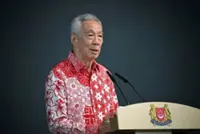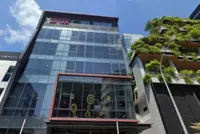Louis Koh (left) and Nellie Cheng from the Forensic Chemistry & Physics Laboratory at work on Sept 3, 2024. - ST/ANN
SINGAPORE: To the untrained eye, the document looked like it was created before 2015 and appeared to show a series of industrial designs made and dated before that year.
The PDF file was submitted as evidence by one of the parties in a dispute over the ownership of a proprietary design in 2022.
But a novel approach to forensics by scientists from the Health Sciences Authority (HSA) quickly uncovered that the document had been doctored and was actually created after 2015 – because the font used did not exist before 2015.
Such materials with disputed legitimacy are referred to as questioned documents, and are typically treated using traditional methods, where elements such as handwriting and signatures are examined.
But since 2020, HSA’s Forensic Chemistry and Physics Lab has been pioneering a joint approach that uses both the traditional methods and analysis of the document’s metadata.
This means that aside from scrutinising traditional elements such as handwriting, it also checks the file data down to each byte.
Louis Koh, a senior forensic scientist at HSA, said the lab discovered a font file in the doctored PDF document by analysing the file’s data streams.
He said: “Data streams are like packets of information inside a file. If you extract these streams, initially they may not be readable by humans.
“But by extracting and decoding them, you can find out what the information is.”
The font file turned out to be something from a Windows 10 operating system, which was released only in mid-2015.
This indicated that the evidence had been manipulated as the font used did not even exist at the time of the document’s purported creation.
The case is one of nine that the HSA has worked on using this new approach so far.
Another case from 2023 involved signatures containing Chinese characters.
While the scanned document appeared to have been dutifully signed, the scientists extracted the digital images of each of the signatures and compared them.
They found that several of the signatures which were purportedly signed on paper were identical down to the pixel.
This indicated that the signatures were copied and replicated digitally, raising questions about the document’s authenticity.
There have been many reports of fraud and forgery cases in recent years, including in the Wirecard scandal and Singapore’s largest case of money laundering involving some S$3 billion (US$2.24 billion) in cash and assets.
But HSA said it is unable to reveal more specifics about each case due to the sensitive nature of its work.
The novel approach taken by the agency came about following an increase in the number of digital files being submitted for examination.
In the last three years, about ten per cent of the over 700 submissions to HSA were digital documents.
They were uncommon before 2022.
Nellie Cheng, a consultant forensic scientist with HSA whose expertise is in the traditional analysis methods, had been examining another PDF file in 2020 when Koh, who specialises in digital analysis, walked past her.
As it was a digital file, she asked if he would like to have a look.
He found the file had been saved over several times. After further analysis, he discovered what changes had been made for each save.
He then reverted the file to what is believed to be the earliest save so Cheng could do a more precise examination.
Cheng said: “The beauty about the HSA lab is that we have scientists with a wide range of expertise, and we can take a multidisciplinary approach and tap each other’s skills.
“As far as I know, we are the first in the field to take such an approach for document forensics.”
To have the scientists demonstrate their capabilities, The Straits Times submitted an edited photo, video and contract to examine.
The scientists were able to detect the edits, while also identifying when they were made, who made them and on what devices.
Cheng said those considering committing fraud through forgery or by tampering with documents should reconsider, as they are unlikely to get away with it.
She said: “With our multidisciplinary approach, I think maybe they would want to think twice about it.” - The Straits Times/ANN





